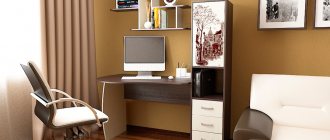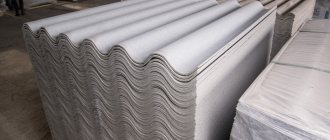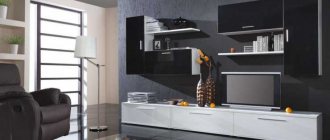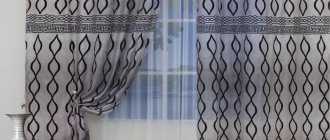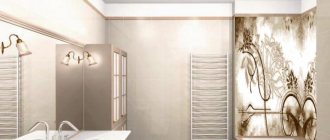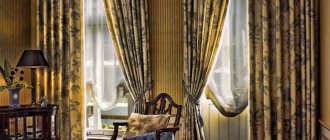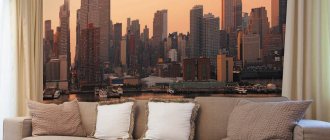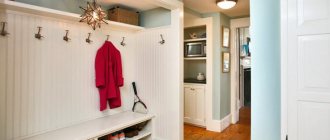Methods of protection
Let's look at recommendations on how to protect your wallpaper.
From cats and dogs
Our beloved cats and dogs – it’s hard to imagine life without them. Cute, touching, funny. They bring us a lot of positive emotions. But sometimes they cost too much. Scratching, gnawing, biting are natural manifestations and natural needs of our pets. We have to come to terms with this. But we can reduce these processes to a minimum or make them less painful for both parties, thereby giving animals a comfortable life and becoming kinder ourselves.
Ways to protect wallpaper from dogs and cats that tear up wallpaper:
- Be sure to buy a scratching post. It’s best to hang it (if it’s on the wall) or put it (if it’s on the floor) exactly where the cat has already chosen a place for itself and where they’re already sharpening their claws. They should be taught this device from birth. If he starts to tear up the wallpaper, then patiently guide him to the scratching post. Perhaps not right away, but everything will work out, and your pet will get used to it.
- Use protective caps on claws. They can be purchased at any veterinary clinic.
- Trim cats' claws at least once a month.
- Use different types of wallpaper:
- Anti-vandal vinyl is very dense, therefore resistant to scratches and friction (what are the features of gluing vinyl wallpaper?).
- Glass wallpaper is practically not interesting for pets. In addition, glass wallpaper can be periodically repainted in new color shades.
- Liquid wallpaper is not so practical. But light restoration will always help get rid of defects (read about what liquid wallpaper is, how to dilute and apply it correctly, here).
We invite you to watch a video on how to protect wallpaper from a cat:
From abrasion by the bed
The wallpaper gradually begins to get dirty and wear out at the headboard or along the bed . This can be prevented:
- If space allows, place the furniture so that it does not touch the walls of the room.
- Buy a bed model with a stationary headboard. If it is not provided, then choose high-quality silk-screen printing as wall decoration. Such wallpaper looks very rich and is not scary to wash with a brush and soap.
- Make your own or buy hanging decorative headboards, such as throw pillows, tapestry, rug, curtains, panels, etc.
- Arrange shelves or niches. It's convenient and functional. You just need to use lightweight structures and not overload them.
From wiping with a chair
Make a custom-made bumper board for the walls from chairs according to individual sizes. You can choose the color according to the tone of the wall design, and also experiment with contrast. After all, a fender board is not only protection, but also a decoration with the function of preventing damage and contamination of premises. Lay a board on the floor as a plinth and thus maintain the distance to the wall, that is, the chair will not come into contact with the adjacent wall.
Near the table in the kitchen
If your dining table is against a wall, then you are familiar with the problem of the wall that is adjacent to the table constantly getting dirty. Agree, it’s not very pleasant to sit at lunch and see a not-so-clean wall in front of you. To avoid such unpleasant moments, you should pay special attention to the decoration of the walls in the kitchen.
- If you decide that you will have wallpaper in your kitchen, then you definitely need to choose washable, liquid, vinyl or glass wallpaper. Paper wallpaper will not suit you. They get dirty easily, absorb odors and fade quickly (how to choose the right wallpaper for the kitchen?).
- A simple, cheap and effective way is painting (what kind of wallpaper is suitable for painting?). The paint must be environmentally friendly. Water-based paint is ideal. And if acrylic is added to it, it will give your walls a velvety feel (how to glue and paint wallpaper correctly?).
- An unconventional option is decorative plaster, panels or brick. All this is quite appropriate in the kitchen. It is possible to finish only the area near the table with these materials. The main thing is that the overall picture matches the chosen style.
- An unusual and original method of decorating a dining area is to hang a mirror next to the table.
Requirements
To create the right interior that will satisfy all the requirements, you must first put them all together. What is fundamentally important for us in a finishing material, and what we turn a blind eye to.
Combining wallpaper in the kitchen, creating an accent on the main wall
The list is as follows, consisting of four points:
- Strength and wear resistance of the material, increased service life. In addition to the fact that heavy wallpaper is simply glued to the wall, it can withstand many mechanical impacts, which is very important in the unpredictable conditions of the dining room.
- Moisture resistance of wallpaper. To regularly wash wallpaper, it is necessary that its structure can withstand a large amount of moisture, and ideally not get wet at all. Wallpaper in the kitchen and dining room needs to be cleaned constantly.
- The ability not to perceive odors or absorb them. Wallpaper that smells of food does not add coziness.
- Resistant to fading. We are more accustomed to being in the kitchen, illuminated by natural light, so in standard apartment layouts large windows are installed in this room. Therefore, wallpaper must actively resist fading and not lose its color. We are directly interested in preserving their decorative qualities for as long as possible.
Related article: How to decorate a fence at the dacha? Decoration, decoration of the fence with your own hands
The list of requirements is impressive, but not critical; a large number of wallpaper varieties fall under these parameters.
Kinds
We have already briefly touched on the wallpapers that suit us, let's expand this list to something acceptable.
Luxurious dining room, and what a chandelier, just look
Wallpaper made of paper is suitable for the dining room only if it is treated with a special water-repellent compound. These are inexpensive paper wallpapers, sold as “washable”; they are mainly produced by Russian and Ukrainian factories.
I would like to note that the colors of such wallpaper are not the most successful, more suitable for country houses, verandas, and bathrooms.
We divide vinyl-based wallpaper into several subgroups:
- A soft, washable vinyl made specifically for kitchens and dining rooms. It is distinguished by its textured texture, high moisture-resistant qualities and a rich range of colors. They occupy the middle price segment of the wallpaper market, closer to inexpensive.
- Hot-stamped rigid vinyl, usually applied to a non-woven backing. This is meter-long, highly durable wallpaper, which is produced by the vast majority of factories. The Germans and Italians produce excellent designs, and domestic manufacturers copy them well. There are currently more rolls of increased width than standard 53 cm wide sheets.
- Silkscreen printing, vinyl woven with fabric fibers. It has a beautiful, highly durable texture that does not fade over time and can withstand the roughest cleaning. Silk-screen wallpaper is ideally glued to absolutely flat walls, since all surface defects are visible through the thin wallpaper.
- Foamed vinyl. We do not recommend this type of vinyl, since it is similar in texture to paper wallpaper with acrylic foam. Its surface is rough, absorbing fats, but it is difficult to wash; there is always a danger of damage to the texture.
Paintable wallpaper is made from non-woven fabric and fiberglass. Non-woven fabric is a more versatile material, just suitable for home use, while fiberglass is used mainly for industrial premises.
Related article: DIY New Year's gifts for 2021: 20 simple and cozy ideas (35 photos)
Durable vinyl wallpaper on dining room walls
Liquid wallpaper, or rather not wallpaper at all, but plaster is also quite suitable for the dining room. With their help, a simple and clear monochromatic interior is created, but if a variegated color scheme is needed, you will have to resort to the options described above.

